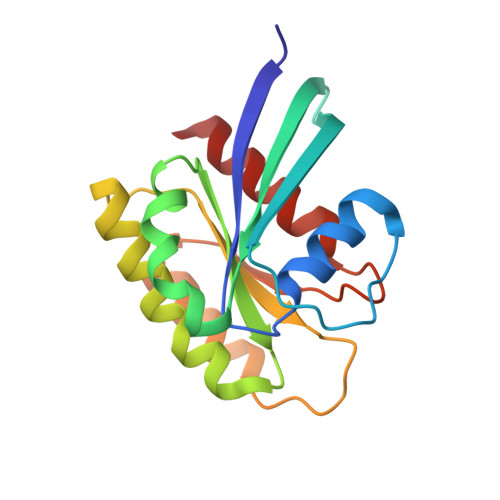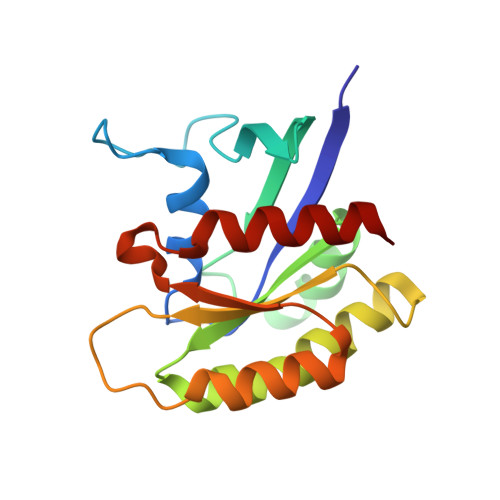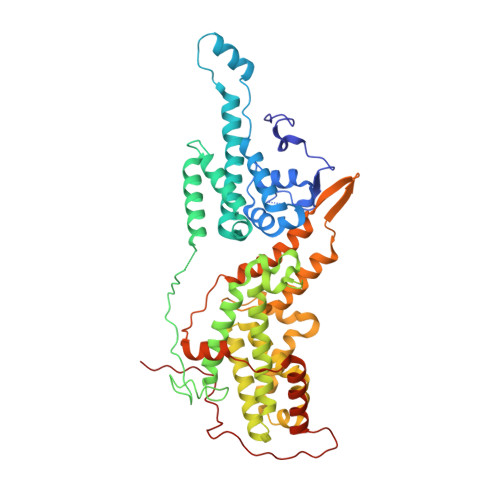Approach for targeting Ras with small molecules that activate SOS-mediated nucleotide exchange.
Burns, M.C., Sun, Q., Daniels, R.N., Camper, D., Kennedy, J.P., Phan, J., Olejniczak, E.T., Lee, T., Waterson, A.G., Rossanese, O.W., Fesik, S.W.(2014) Proc Natl Acad Sci U S A 111: 3401-3406
- PubMed: 24550516
- DOI: https://doi.org/10.1073/pnas.1315798111
- Primary Citation of Related Structures:
4NYI, 4NYJ, 4NYM - PubMed Abstract:
Aberrant activation of the small GTPase Ras by oncogenic mutation or constitutively active upstream receptor tyrosine kinases results in the deregulation of cellular signals governing growth and survival in ∼30% of all human cancers. However, the discovery of potent inhibitors of Ras has been difficult to achieve. Here, we report the identification of small molecules that bind to a unique pocket on the Ras:Son of Sevenless (SOS):Ras complex, increase the rate of SOS-catalyzed nucleotide exchange in vitro, and modulate Ras signaling pathways in cells. X-ray crystallography of Ras:SOS:Ras in complex with these molecules reveals that the compounds bind in a hydrophobic pocket in the CDC25 domain of SOS adjacent to the Switch II region of Ras. The structure-activity relationships exhibited by these compounds can be rationalized on the basis of multiple X-ray cocrystal structures. Mutational analyses confirmed the functional relevance of this binding site and showed it to be essential for compound activity. These molecules increase Ras-GTP levels and disrupt MAPK and PI3K signaling in cells at low micromolar concentrations. These small molecules represent tools to study the acute activation of Ras and highlight a pocket on SOS that may be exploited to modulate Ras signaling.
- Departments of Biochemistry, Pharmacology, and Chemistry, Vanderbilt University School of Medicine, Nashville, TN 37232.
Organizational Affiliation:





















